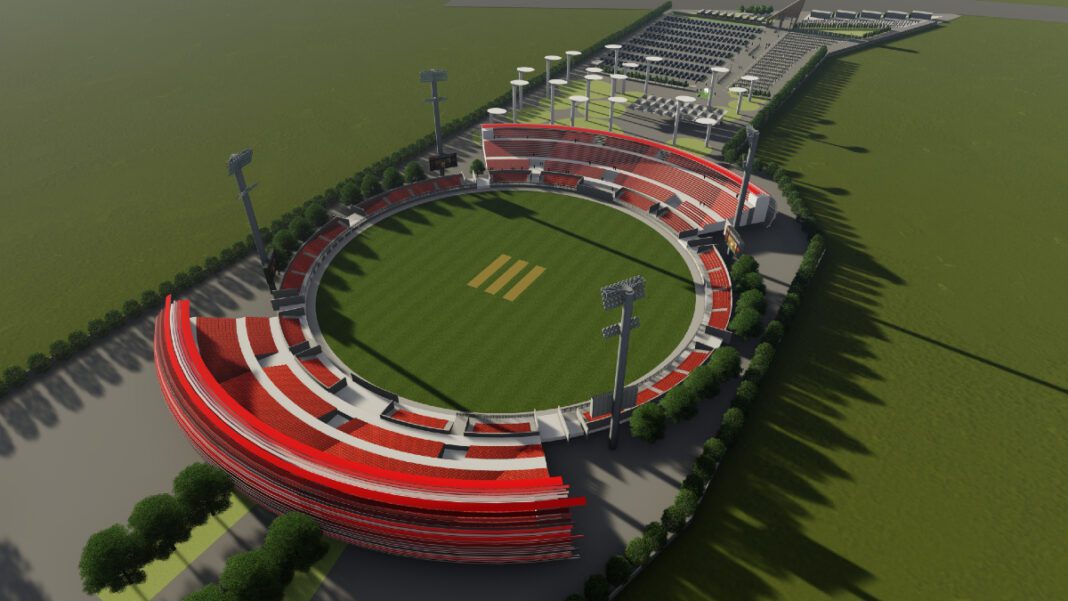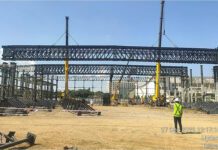Structures of cricket stadiums around the country make any conversation interesting, as these structures are all unique in their ways, one won’t find the same concept being used elsewhere. The main element that sets them apart is that they are inspired by unique concepts, designs or objects.
The International Cricket Stadium, in Nashik, is a new stadium inspired by the cricket ball that has joined India’s list of unique stadiums. It is the first 35-acre stadium located at Peth Road with a seating capacity of 45,000 spectators, along with the main stadium, the campus consists of a grand entrance avenue, a central plaza, an entrance gate and a bus stop.
A Red Resemblance
Dhananjay Pawar, Principal Architect, Synectics Architects, states, that a cricket ball is the inspiration behind this stadium, the patterns too resemble the texture of the ball. Shades of the stadium are also based on the colour palette of the ball.
Several solar panels are placed on the outer periphery of the circular ring of the stadium. The photovoltaic cells also work as a source of electricity for the entire campus, and these cells glow at night which adds a unique touch to this structure.
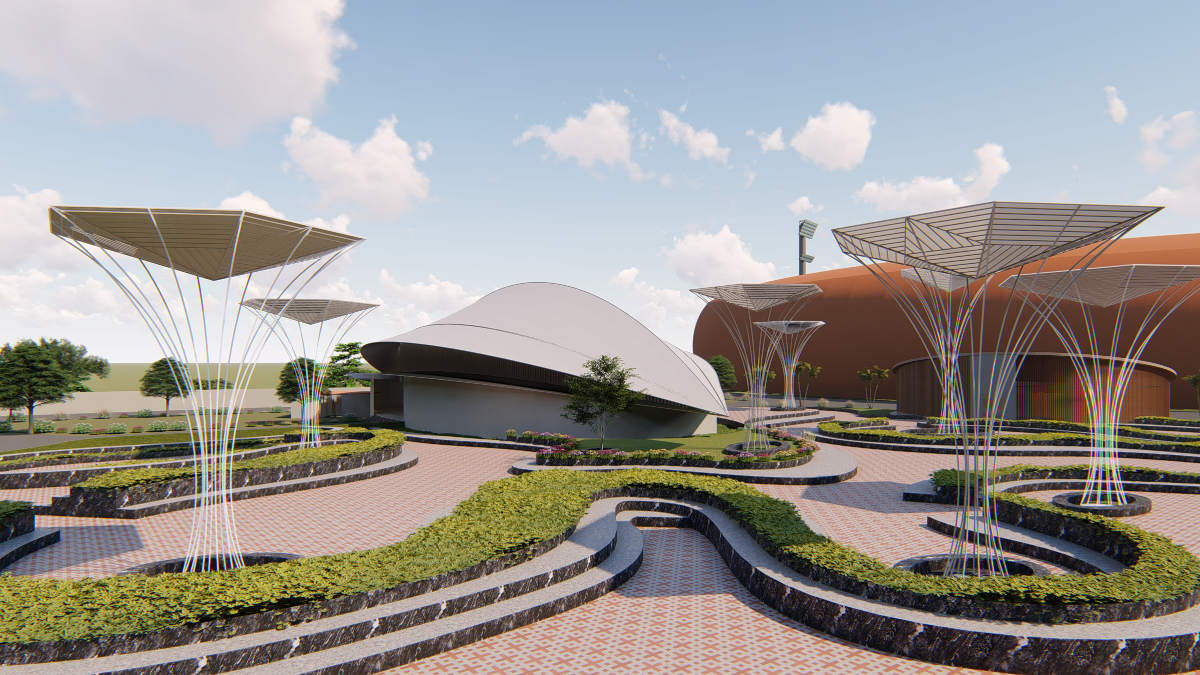 From Trusses to Stands
From Trusses to Stands
Usually, steel is majorly used in long-span structures and here it has been used to design each and every element. The semi-circular moulded trusses have been used in the entire complex which helps form a canopy-like roof which in a continuous form extends downwards as a stand for the spectators. The roofs of the food plaza and ticket counter are free-flowing in nature and have been moulded in steel trusses giving it an innovative quotient.
Throughout the entire complex, fabricated steel trusses have been utilised for structural support. Additionally, pre-cast elements were chosen for the stands, as both these choices significantly minimised the construction timeline.
The pitch has been designed according to international standards with the use of German technology. It consists of several layers of different materials and includes a system of nozzles to collect rainwater or stormwater. This water is then directed to an underground water tank located beneath the pitch. On a day with heavy rainfall, it takes approximately eight minutes for the pitch gates to dry.
Tackling the terrain
One of the major challenges to tackle was the site’s topography and linearity since it has a mountain-like structure, i.e., the terrain has a slope of 0 to 50 m downslope. In order to overcome this challenge, a flat terrain was created in levels by dividing the linear site into six major zones:
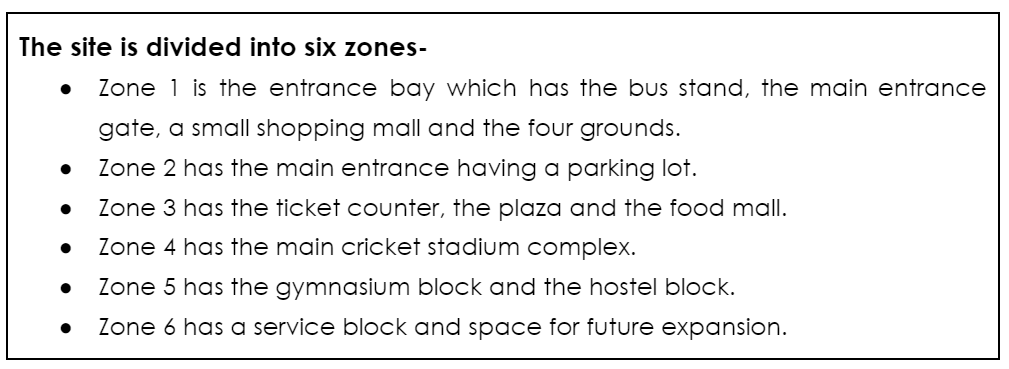
The strategy was to cut and fill the land to make the terrain flat and fit to build the campus, and the difference between each zone is nearly 5-10 m. Retaining walls and RE walls were constructed along the periphery of one side of the site. To compliment the shape of the site, activities have been placed as per their circulation demands. The stadium has been positioned in the centre of the complex to align with the required width of the site according to international standards.
During the stadium complex’s design process, plans for expanding the surrounding area were taken into account, and space was intentionally left for this purpose. The expansion could be carried out without modifying the facade, as required by the authorities, and zone 6 has been specifically designated for the potential expansion of additional activities.
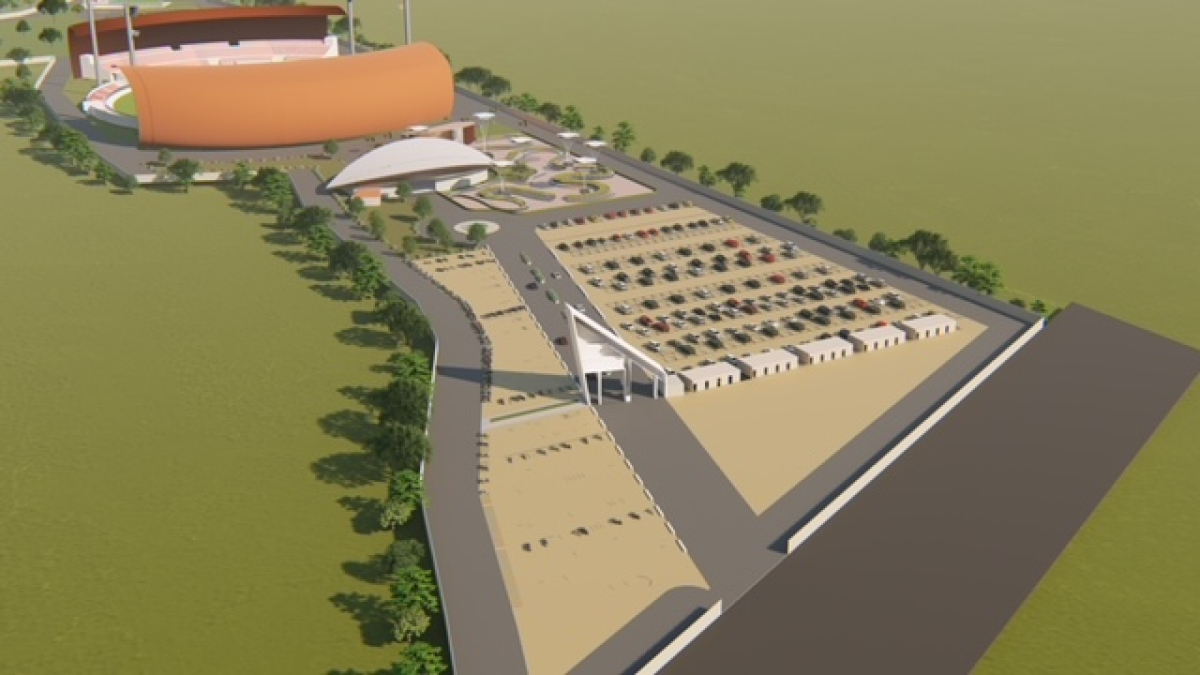
The structure was designed keeping safety measures in mind, one of them was for the entire campus to have a 6 m wide periphery, and emergency exit roads in case of fire and natural calamities or accidents. The complex has 16 emergency exits which can be used by the spectators to escape easily, in case of such incidents and the complex too can be evacuated in under 8 minutes. Norms were followed In order to make this structure earthquake-resistant as per the Indian Standard Code.
Fact File
Project: International Cricket Stadium, Nashik, Maharashtra
Client: Nashik Municipal Corporation
Architect: Synectics Architects
Consultant: Deepak Kulkarni Consultants
Tonnage: 15,000 Tonne
Current Status: Ongoing
Quote
“Not every individual gets to design a stadium in their lifetime. This is a futuristic project and its process includes an anthro study of circulation and major service. This was designed in such a manner that it’s futuristic and made considering future needs to establish a unique global identity. This is designed for various formats of cricket tournaments, i.e., from Ranji Trophy to One-Day international cricket tournaments.”
– Dhananjay Pawar, Principal Architect, Synectics Architects


